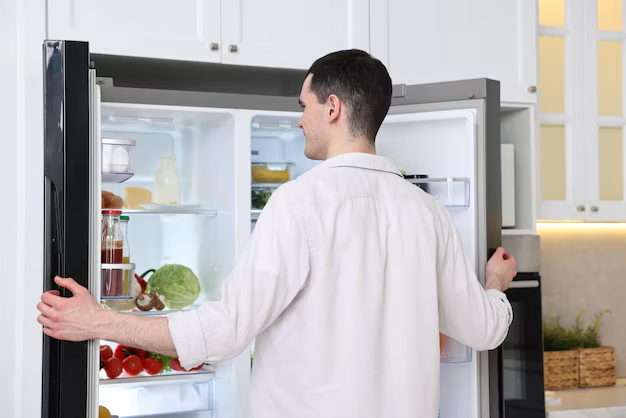How to Easily Power On Your LG Refrigerator and Keep It Running Smoothly
Imagine stepping into your kitchen, only to find your new LG refrigerator standing silent and dark. You're eager to stock it with fresh groceries, but first, you need to turn it on. Starting up an LG refrigerator for the first time might seem straightforward, but knowing the steps and additional tips can ensure optimal operation from the get-go.
In this comprehensive guide, we’ll walk you through turning on your LG refrigerator, important setup tips, and how to maintain it for years of reliable service. Let’s dive in and ensure your LG refrigerator is cooling efficiently!
Understanding the Basics: Powering On Your LG Refrigerator
Locate the Power Switch
Before diving into the intricacies of refrigerator functionality, the first task is finding the power switch or plug.
- Check the Power Cord: LG refrigerators typically don't have an actual "power switch." Instead, they rely on being plugged in. Locate the power cord behind your fridge.
- Find the Socket: Ensure the cord is plugged into a grounded electrical outlet. It is advisable to connect your refrigerator to its dedicated circuit to prevent electrical overload.
Setting the Right Temperature
Once your refrigerator is plugged in, it's time to set the appropriate temperature to ensure your food stays fresh.
- Refrigerator Compartment: A temperature range of about 37-39°F (3-4°C) is recommended for the freshest food preservation.
- Freezer Compartment: Aim for 0°F (-18°C) to keep frozen foods well-preserved.
Most LG models have a digital display for setting the temperature. Refer to your fridge’s manual for instructions on navigating its control panel.
Listening for the Hum
Once powered on, your refrigerator should emit a soft hum, indicating it’s operational. It might take a few minutes for your unit to start cooling, so patience is key.
Optimizing Refrigerator Performance
Placement Matters
Position your refrigerator wisely to maximize cooling efficiency:
- Ventilation Space: Allow at least a few inches of clearance on all sides to prevent overheating.
- Away from Heat Sources: Keep it distant from ovens, dishwashers, or direct sunlight to reduce energy consumption.
Stabilizing on a Level Surface
For efficient operation, ensure your refrigerator is level. An unbalanced fridge could result in improper cooling and excess noise. Adjustable feet or rollers at the base can be used to level the appliance.
Allow Settling Time
Refrigerators need time to settle after being moved:
- Wait Before Turning On: When a refrigerator is moved, wait at least 2 hours before plugging it in to ensure oils within the compressor settle properly.
- Cooling Time: Once plugged in, allow 24 hours for the temperature to stabilize before stocking with perishables.
Avoiding Common Mistakes
Overloading
Avoid overstuffing your refrigerator as this blocks air circulation and reduces cooling efficiency. Arrange items to allow adequate airflow.
Frequent Door Opening
Avoid opening your refrigerator door too frequently as each opening lets cold air escape, causing the refrigerator to work harder. Always ensure the door seal is airtight.
Routine Maintenance for Longevity
Regular Cleaning
Keep your refrigerator interior clean to prevent odor and mold. Use a mixture of mild detergent and water to regularly wipe down shelves and drawers.
Vacuum the Coils
Dust and debris on the condenser coils can lead to inefficiency:
- Frequency: Aim to clean the coils every six months.
- Method: Gently vacuum or brush away accumulated dust for optimal performance.
Inspecting Door Seals
A bad seal allows cold air to escape. Periodically check the rubber gasket around the door; replace it if it’s worn out or cracked.
Troubleshooting Initial Challenges
Power Issues
If your refrigerator does not power on:
- Outlet Check: Test the outlet with another device to ensure it’s working.
- Circuit Breaker: Check your home’s electrical panel to see if the breaker has tripped.
- Professional Help: If issues persist, consider contacting an authorized technician for assistance.
Inconsistent Cooling
Should your refrigerator not maintain a consistent temperature:
- Airflow Blockages: Ensure vents inside the refrigerator are unobstructed.
- Thermostat Settings: Double-check temperature settings; adjust as necessary.
- Technical Support: Seek advice from technical support if problems continue.
Summary of Steps and Tips
Here's a quick reference guide to ensure your LG refrigerator is correctly turned on and maintained:
🔌 Powering On:
- Plug into a dedicated, grounded outlet.
- Set temperatures: Fridge (37-39°F), Freezer (0°F).
🗺️ Strategic Placement:
- Leave clearance for ventilation.
- Position away from heat sources.
🕒 Allow Proper Timing:
- Stabilize on a level surface.
- Allow 24 hours for optimal cooling after startup.
🚫 Avoid:
- Overloading and frequent door openings.
- Ignoring strange noises or performance drops.
🛠️ Regular Maintenance:
- Clean interior surfaces and condenser coils.
- Check door seals for airtightness.
By following these guidelines, your LG refrigerator should operate efficiently and serve your cooling needs effectively. Trust in the routine care and thoughtful usage principles outlined here to keep your kitchen running smoothly.
